5. The module
The heart or perhaps better said, the "brain" of an e-drum is the drum module. An electronic drum sounds as good or bad as the drum module allows it to. You can think of the device like a synthesizer or sampler without keys - a control unit that processes the incoming signals from the triggers and links them to the corresponding sounds and effects.
The quality of the module depends not only on the quality of the onboard sounds, but also on the ability to add your own samples to many modules. It is crucial how accurately, quickly and precisely the incoming trigger signal is processed. What is easy to do in terms of dynamic range with an acoustic drum is a real challenge for a drum module. This immediately becomes evident when trying a roll on the electronic snare. With inferior modules, the sound is very sterile and uniform. In the worst case, once just hears the same sound at different volumes - which is not true in reality, because a quiet snare hit has a completely different sound profile than a loud one. The number of volume gradations is also often very limited in low-cost modules.
Especially beginner and mid-range modules often have a training mode to improve timing and monitor progress. Many modules also offer effects such as ambience, echo, or reverb to refine the internal sounds.
Only a limited number of renowned manufacturers are currently producing e-drum modules for the European market, with Roland leading the way over Yamaha - followed by Alesis and some other providers from the Far East.
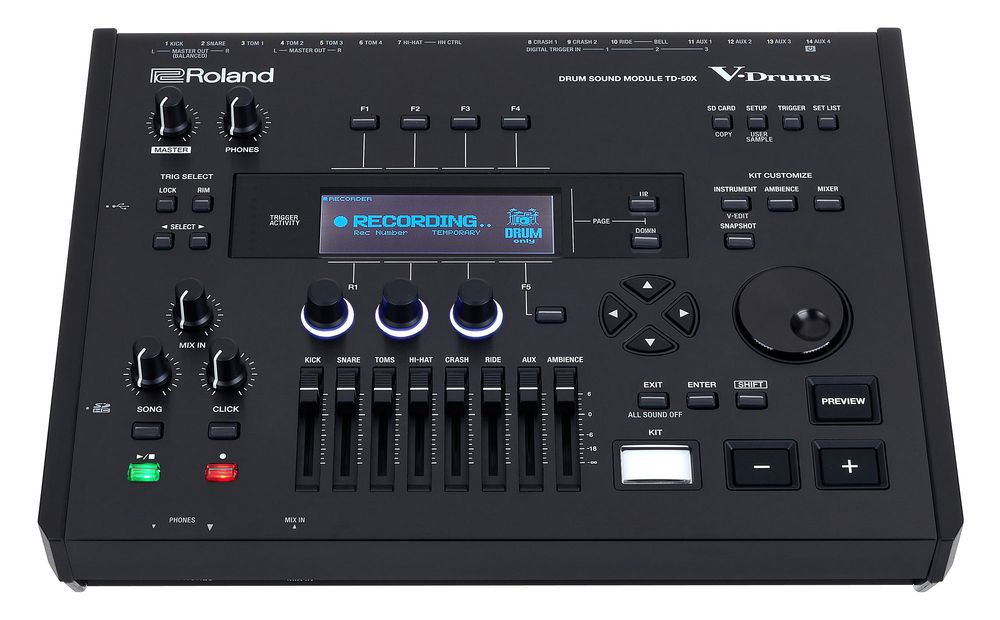
Roland TD-50X Drum Module
With the introduction of the TD-50X module, Roland set the bar very high - at a corresponding price, of course - but there is now tough competition, such as the excellent Gewa G9.
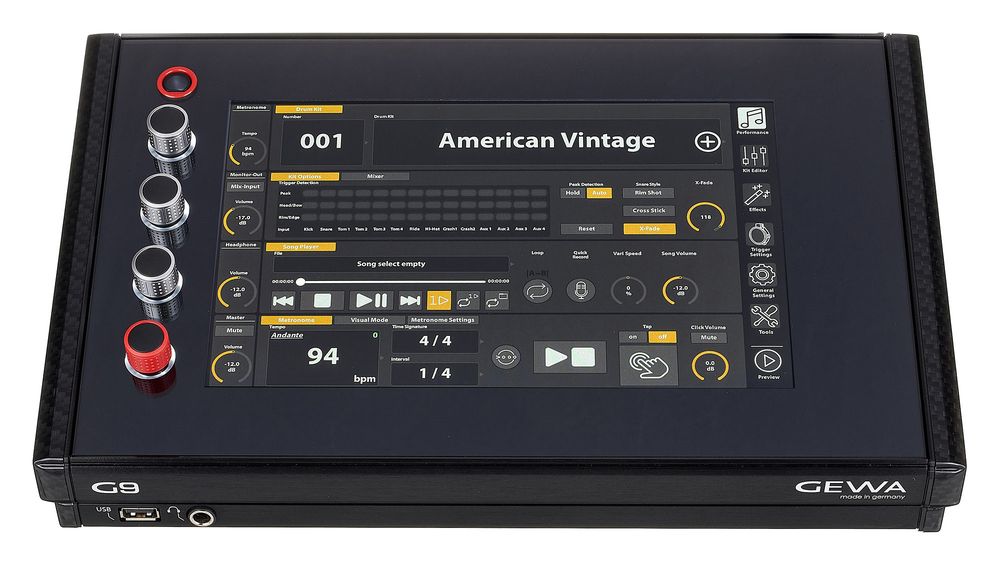
Gewa G9 Drum Workstation
That being said, you don't have to despair if you don't want to spend 5000 to 8000 euros for an e-drum set or 2500 euros for a module. Beginner models are excellent for practice. Furthermore, the advantages regarding sound variety and almost silent playing are absolutely present even in these entry-level models.
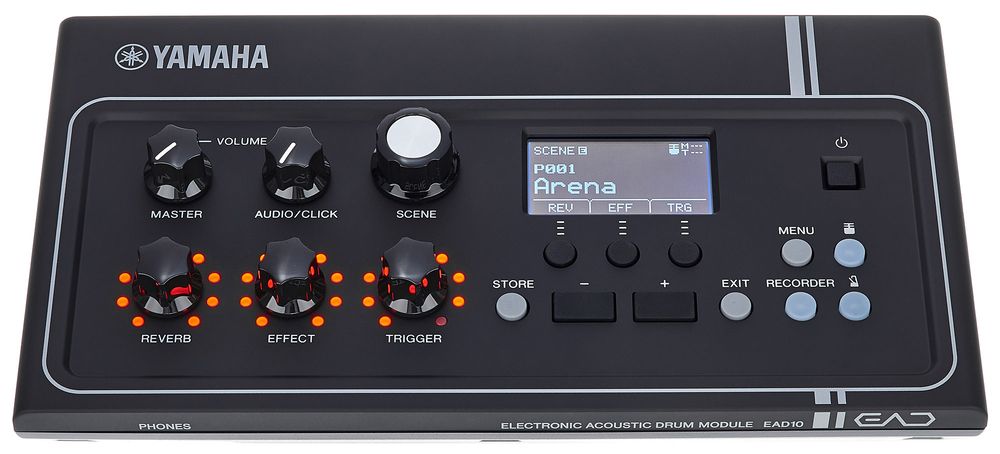
Yamaha EAD10 Drum Module
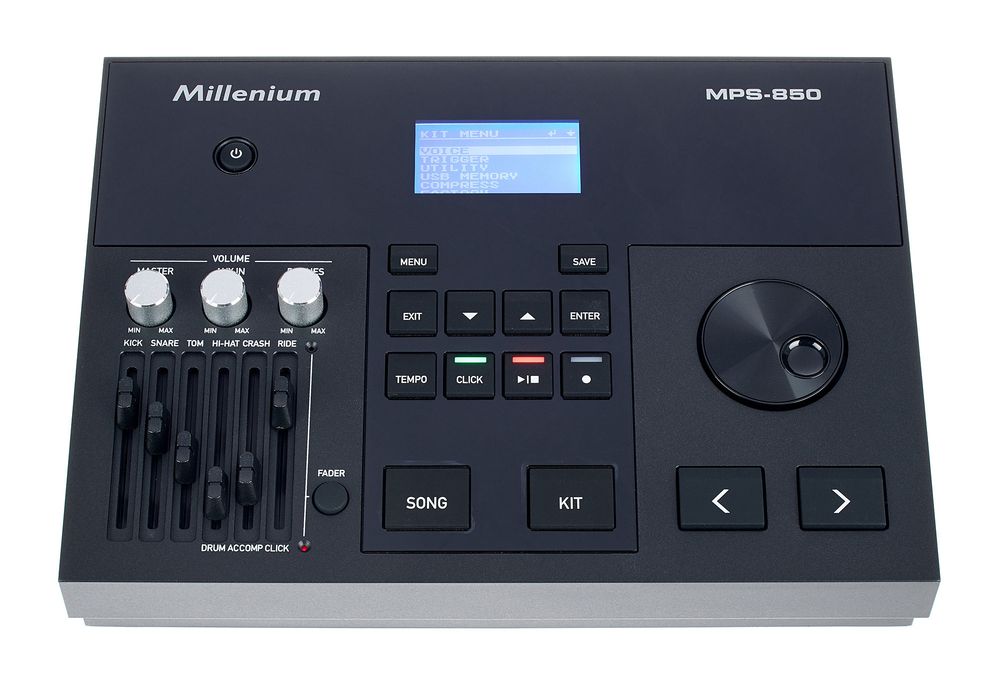
Millenium MPS-850 Drum Module
Connectivity
Drum modules have inputs for pads and triggers. Ideally, you should connect 1x bass drum, 1x snare (preferably stereo), 1x hi-hat pedal and hi-hat cymbal, at least 3x toms, and 1x ride and 1x crash cymbal. The Roland TD-50 is an extreme example, offering no fewer than 14 dual-trigger inputs. Inexpensive kits usually include a line input for connecting an MP3 player, as well as two independent outputs for connection to a PA or a drum monitor and for headphones. A MIDI interface is also standard, allowing the e-drum set to connect to sound generators like keyboards. Additionally, a USB interface is available for connecting to a computer, enabling direct recording onto a DAW like Cubase, Logic, ProTools, or Ableton. High-quality modules offer additional analog and digital outputs for multichannel integration into live and studio setups.
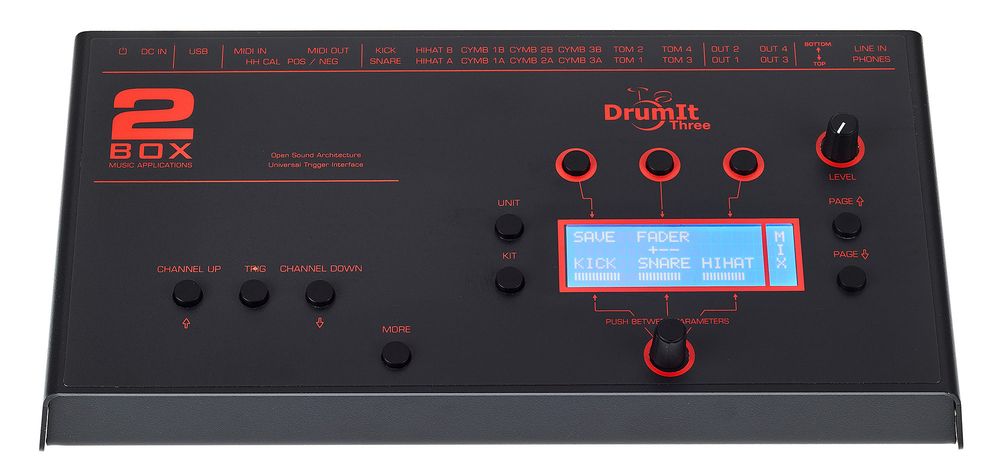
2box DrumIt Three

Connection Panel







